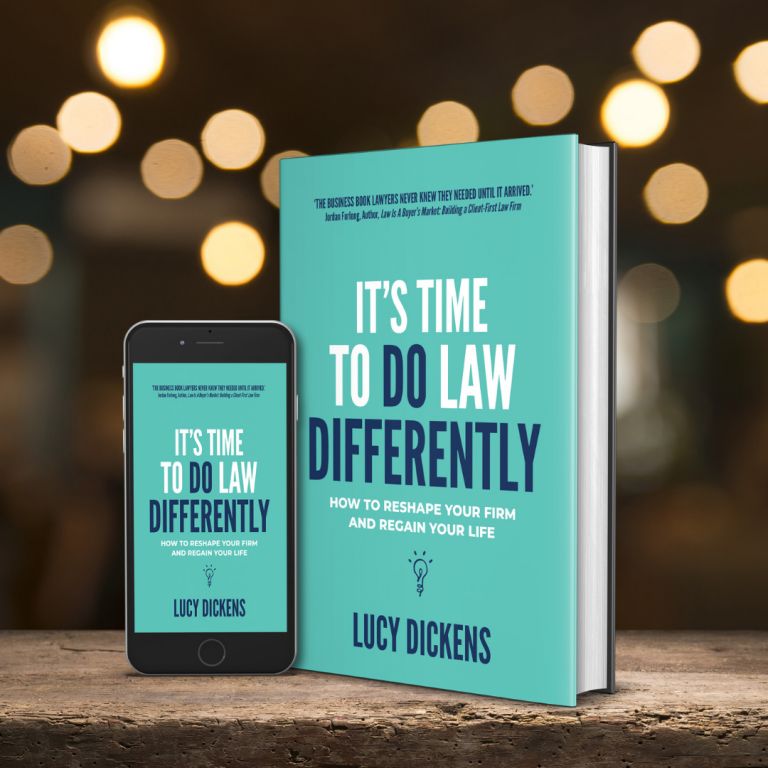Productised legal services are services that are packaged, sold and delivered, much like products. Unlike bespoke engagements where each retainer is prepared on a per-matter basis, products offer a standard service. They include a routine set of tasks, outcomes and a standard, fixed price.
In my previous post, I shared 10 reasons why you should productise your legal services. In short, well designed and produced legal service products will result in performance improvements, both in sale and delivery. They offer a win-win solution, enabling you to work less and earn more while also providing more affordable, better value and more easily accessible legal help to consumers.
In the new legal landscape, differentiation is essential. Offering productised legal services is one way to make your service offering more attractive and your firm easier to do business with.
So how do you go about productising your legal services? Here are four steps to follow.
Step 1: Identify
Many people struggle to identify opportunities to productise legal services, but once you get started you will start to identify products everywhere! So where do you start?
Look for services you already provide that meet one or more of these criteria:
- work that is high-volume;
- work with low-profit margins;
- repetitive tasks that can easily be automated or reduced to a process;
- services for which clients often object about price;
- recurring engagements (these are often routine and have predictable outcomes).
Don’t shy away from entry-level work. This work is often easiest to distil to a clear workflow and is a valuable way to attract clients, build trust and establish your expertise. If you can provide a product that helps your clients at the start of their legal problem, you can start to build a relationship with them from the outset.
Step 2: Clarify
Unlike traditional lawyer-client relationships, productised legal services aren’t full-service arrangements. Products offer a limited scope which must be clearly detailed upfront. It is important to define the parameters of the service, including:
- What’s in? What’s out?
- What are the key milestones, deliverables and end products?
- When will each stage be delivered?
- What are the matters that the client is responsible for?
- What can they expect of you? What do you need from them?
Your product can provide a basic service, but it needs to cover everything required to complete a straightforward matter. Your clients won’t appreciate you offering a conveyancing product that has add-ons to attend settlement or arrange a discharge of mortgage – they expect that these standard services will be included. On the other hand, a product that offers the preparation of a straightforward Will may not be expected to include complex testamentary trusts. The aim is to package up a complete service and the scope must be clearly articulated up front.
Step 3: Process
Process is the engine that drives the provision of legal service products. Streamlined and efficient processes are integral to a product’s success. The aim is to standardise production to reduce cost, minimise risk and improve performance, all of which results in more value for the client.
Process needs to be considered from both a frontstage and backstage perspective. The frontstage is everything the client sees – your advertisements, booking system, website, phone calls, emails and end-products. Each of these touchpoints need to work together to create a unified experience for the client.
Backstage processes are those that are required to deliver the product, but which the client doesn’t see. Consider how you can eliminate, simplify, automate and delegate tasks to improve service provision.
Step 4: Price
Setting a price for your product involves finding a win-win point between the client’s perceived value in the service and your own price point. Measuring the value a client receives isn’t easy and may, in fact, be different for every client. Some things to consider when determining the price of your product include:
- What is the cost of production? Include rent, wages, software costs, office supplies, marketing.
- What is the risk to the firm?
- How does the client benefit from the product? Is it increased wealth? Reduced risk? Time-saving? Decreased liability?
- What is the market rate for a similar service?
Pricing legal services isn’t easy, but fortunately, your price doesn’t have to be set in stone. You can adjust your price after you’ve received feedback from the market.
Ready to get started?
Productising your legal services is a useful way to distinguish your service from your competitors, provide value to your clients and make a profit, but you don’t need to overhaul your whole practice at once. Start small and develop one area at a time.
I’d love to hear about your journey with productising legal services. What part of creating legal service products have you found the most challenging?






One Response
Thank you for writing such a great article. You take the mystery away from productising legal services.